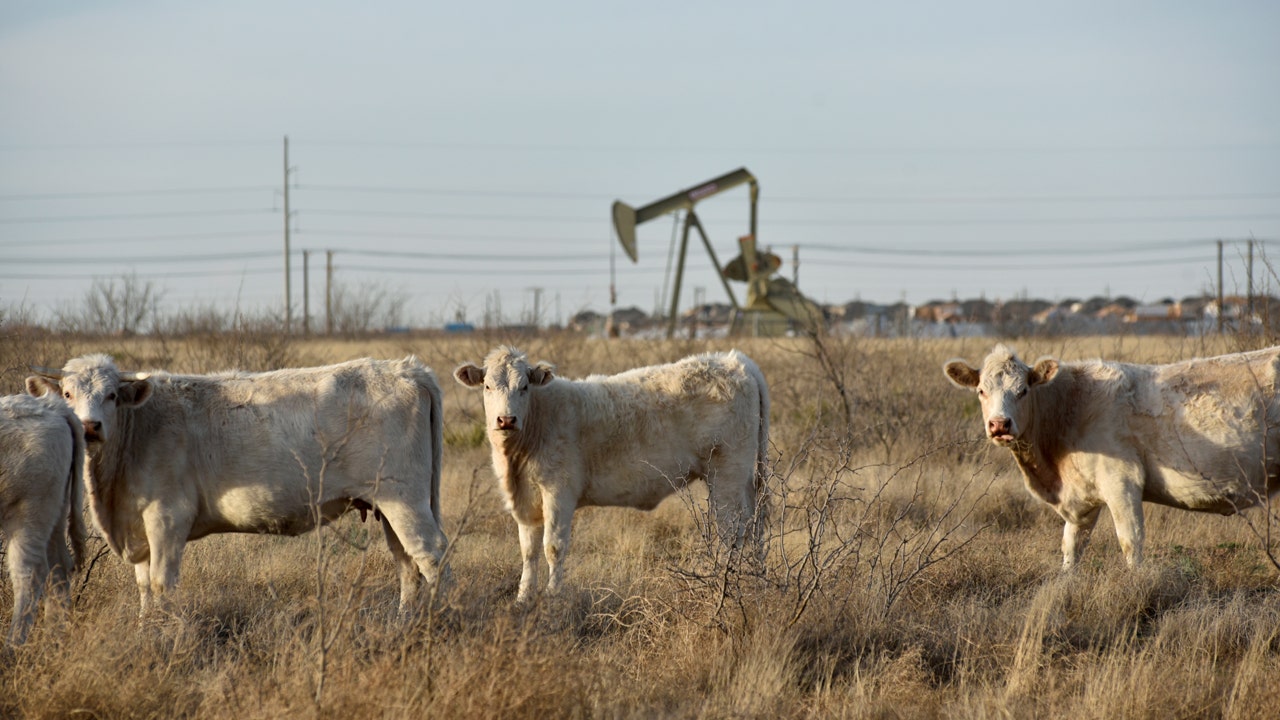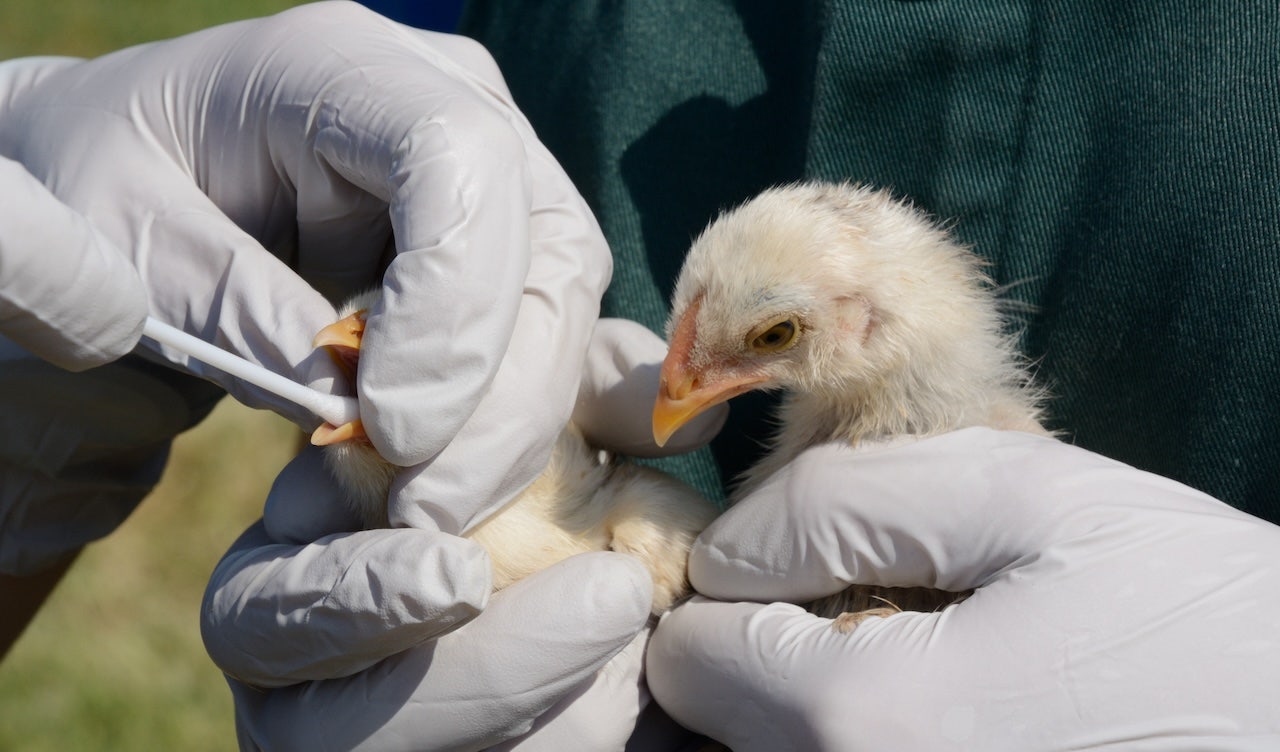Health
Bird flu-infected cows have died in 5 states as experts closely monitor the disease

- Dairy cows infected with bird flu in five U.S. states have died or been slaughtered by farmers because they did not recover. The U.S. Department of Agriculture (USDA) says the vast majority of cows recover well.
- Bird flu infections lead cattle to suffer reduced milk production, digestive issues, fever, and diminished appetite, and can beget secondary infections that can be lethal.
- The USDA reported that no viral particles were found in samples of ground beef collected at retail stores, and that no bird flu virus was found after cooking ground beef to medium to well done after it was injected with a virus surrogate as part of an experiment.
Dairy cows infected with avian flu in five U.S. states have died or been slaughtered by farmers because they did not recover, state officials and academics told Reuters.
Reports of the deaths suggest the bird flu outbreak in cows could take a greater economic toll in the farm belt than initially thought. Farmers have long culled poultry infected by the virus, but cows cost much more to raise than chickens or turkeys.
A U.S. Department of Agriculture spokesperson said the agency knew of a few deaths but that the vast majority of cows recover well. Reuters was not able to determine the total number of cows with bird flu that died or were killed in South Dakota, Michigan, Texas, Ohio and Colorado.
WHO CONFIRMS FIRST HUMAN DEATH FROM A(H5N2) BIRD FLU
Avian flu has infected dairy cows in more than 80 herds across 10 states since late March, according to the USDA.
Some of the animals died of secondary infections contracted after bird flu weakened their immune systems, said state veterinarians, agriculture officials, and academics assisting in state responses to bird flu. Other cows were killed by farmers because they failed to recover from the virus.
Cattle infected with bird flu suffer reduced milk production, digestive issues, fever, and diminished appetite, according to farmers and veterinarians.
Cows graze in an oil production field in Midland, Texas, on February 13, 2019. Dairy cows infected with bird flu have died or been slaughtered by farmers because they did not recover in five U.S. states. (Reuters/Nick Oxford/ File Photo)
In South Dakota, a 1,700-cow dairy sent a dozen of the animals to slaughter after they did not recover from the virus, and killed another dozen that contracted secondary infections, said Russ Daly, a professor with South Dakota State University and veterinarian for the state extension office who spoke with the farm.
“You get sick cows from one disease, then that creates a domino effect for other things, like routine pneumonia and digestive issues,” Daly said.
A farm in Michigan killed about 10% of its 200 infected cows after they too failed to recover from the virus, said Phil Durst, an educator with Michigan State University Extension who spoke with that farm.
Michigan has more confirmed infections in cattle than any state as well as two of three confirmed cases of U.S. dairy workers who contracted bird flu.
In Colorado, some dairies reported culling cows with avian flu because they did not return to milk production, said Olga Robak, spokesperson for the state Department of Agriculture.
Ohio Department of Agriculture spokesperson Meghan Harshbarger said infected cows have died in Ohio and other affected states, mostly due to secondary infections.
The Texas Animal Health Commission also confirmed that cows have died from secondary infections at some dairy operations with avian flu outbreaks.
Officials could not provide figures for the number of statewide cow mortalities.
New Mexico’s state veterinarian, Samantha Uhrig, said farmers increasingly culled cows due to decreased milk production early in the outbreak, before the U.S. even confirmed bird flu was infecting cattle. Culling decreased as farmers learned that most cows gradually recovered, she said.
Officials in North Carolina and Kansas said there have been few to no cow deaths associated with bird flu in their states. Idaho officials did not respond to requests for information.
Bird flu virus particles were found in beef tissue taken from one dairy cow sent to be slaughtered for meat, and meat from the animal did not enter the food supply, USDA said last month.
The agency has reported that no viral particles were found in samples of ground beef collected at retail stores, and that no bird flu virus was found after cooking ground beef to medium to well done, after it was injected with a virus surrogate as part of an experiment.

Health
How The Great British Bake Off Host Alison Hammond Lost 150 Lbs Naturally

Sign Up
Create a free account to access exclusive content, play games, solve puzzles, test your pop-culture knowledge and receive special offers.
Already have an account? Login
Use left and right arrow keys to navigate between menu items.
Use escape to exit the menu.
Health
One state leads country in human bird flu with nearly 40 confirmed cases

A child in California is presumed to have H5N1 bird flu, according to the San Francisco Department of Public Health (SFDPH).
As of Dec. 23, there had been 36 confirmed human cases of bird flu in the state, according to the California Department of Public Health (CDPH).
This represents more than half of the human cases in the country.
LOUISIANA REPORTS FIRST BIRD FLU-RELATED HUMAN DEATH IN US
The latest pediatric patient, who lives in San Francisco, experienced fever and conjunctivitis (pink eye) as a result of the infection.
The unnamed patient was not hospitalized and has fully recovered, according to the SFDPH.
A child in California is presumed to have H5N1 bird flu, according to the San Francisco Department of Public Health. (iStock)
The child tested positive for bird flu at the SFDPH Public Health Laboratory. The U.S. Centers for Disease Control and Prevention (CDC) will perform additional tests to confirm the result.
CLICK HERE TO SIGN UP FOR OUR HEALTH NEWSLETTER
It is not yet known how the child was exposed to the virus and an investigation is ongoing.
“I want to assure everyone in our city that the risk to the general public is low, and there is no current evidence that the virus can be transmitted between people,” said Dr. Grant Colfax, director of health, in the press release.
BIRD FLU PATIENT HAD VIRUS MUTATIONS, SPARKING CONCERN ABOUT HUMAN SPREAD
“We will continue to investigate this presumptive case, and I am urging all San Franciscans to avoid direct contact with sick or dead birds, especially wild birds and poultry. Also, please avoid unpasteurized dairy products.”
Samuel Scarpino, director of AI and life sciences and professor of health sciences at Northeastern University in Boston, is calling for “decisive action” to protect individuals who may be in contact with infected livestock and also to alert the public about the risks associated with wild birds and infected backyard flocks.

An infectious diseases expert called for “decisive action” to alert the public about the risks associated with wild birds and infected backyard flocks. (iStock)
“While I agree that the risk to the broader public remains low, we continue to see signs of escalating risk associated with this outbreak,” he told Fox News Digital.
Experts have warned that the possibility of mutations in the virus could enable person-to-person transmission.
“While the H5N1 virus is currently thought to only transmit from animals to humans, multiple mutations that can enhance human-to-human transmission have been observed in the severely sick American,” Dr. Jacob Glanville, CEO of Centivax, a San Francisco biotechnology company, told Fox News Digital.

As of Jan. 10, there have been a total of 707 infected cattle in California, per reports from the California Department of Food and Agriculture. (iStock)
“This highlights the requirement for vigilance and preparation in the event that additional mutations create a human-transmissible pandemic strain.”
As of Jan. 10, there have been a total of 707 infected cattle in California, per reports from the California Department of Food and Agriculture (CDFA).
For more Health articles, visit www.foxnews.com/health
In the last 30 days alone, the virus has been confirmed in 84 dairy farms in the state.
Health
Chronic Pain Afflicts Billions of People. It’s Time for a Revolution.

“In the beginning, everyone thought they were going to find this one breakthrough pain drug that would replace opioids,” Gereau said. Increasingly, though, it’s looking like chronic pain, like cancer, could end up having a range of genetic and cellular drivers that vary both by condition and by the particular makeup of the person experiencing it. “What we’re learning is that pain is not just one thing,” Gereau added. “It’s a thousand different things, all called ‘pain.’”
For patients, too, the landscape of chronic pain is wildly varied. Some people endure a miserable year of low-back pain, only to have it vanish for no clear reason. Others aren’t so lucky. A friend of a friend spent five years with extreme pain in his arm and face after roughhousing with his son. He had to stop working, couldn’t drive, couldn’t even ride in a car without a neck brace. His doctors prescribed endless medications: the maximum dose of gabapentin, plus duloxetine and others. At one point, he admitted himself to a psychiatric ward, because his pain was so bad that he’d become suicidal. There, he met other people who also became suicidal after years of living with terrible pain day in and day out.
The thing that makes chronic pain so awful is that it’s chronic: a grinding distress that never ends. For those with extreme pain, that’s easy to understand. But even less severe cases can be miserable. A pain rating of 3 or 4 out of 10 sounds mild, but having it almost all the time is grueling — and limiting. Unlike a broken arm, which gets better, or tendinitis, which hurts mostly in response to overuse, chronic pain makes your whole world shrink. It’s harder to work, and to exercise, and even to do the many smaller things that make life rewarding and rich.
It’s also lonely. When my arms first went crazy, I could barely function. But even after the worst had passed, I saw friends rarely; I still couldn’t drive more than a few minutes, or sit comfortably in a chair, and I felt guilty inviting people over when there wasn’t anything to do. As Christin Veasley, director and co-founder of the Chronic Pain Research Alliance, puts it: “With acute pain, medications, if you take them, they get you over a hump, and you go on your way. What people don’t realize is that when you have chronic pain, even if you’re also taking meds, you rarely feel like you were before. At best, they can reduce your pain, but usually don’t eliminate it.”
A cruel Catch-22 around chronic pain is that it often leads to anxiety and depression, both of which can make pain worse. That’s partly because focusing on a thing can reinforce it, but also because emotional states have physical effects. Both anxiety and depression are known to increase inflammation, which can also worsen pain. As a result, pain management often includes cognitive behavioral therapy, meditation practice or other coping skills. But while those tools are vital, it’s notoriously hard to reprogram our reactions. Our minds and bodies have evolved both to anticipate pain and to remember it, making it hard not to worry. And because chronic pain is so uncomfortable and isolating, it’s also depressing.
-

 Politics1 week ago
Politics1 week agoCarter's judicial picks reshaped the federal bench across the country
-

 Politics1 week ago
Politics1 week agoWho Are the Recipients of the Presidential Medal of Freedom?
-

 Health1 week ago
Health1 week agoOzempic ‘microdosing’ is the new weight-loss trend: Should you try it?
-

 World1 week ago
World1 week agoSouth Korea extends Boeing 737-800 inspections as Jeju Air wreckage lifted
-
/cdn.vox-cdn.com/uploads/chorus_asset/file/25822586/STK169_ZUCKERBERG_MAGA_STKS491_CVIRGINIA_A.jpg)
/cdn.vox-cdn.com/uploads/chorus_asset/file/25822586/STK169_ZUCKERBERG_MAGA_STKS491_CVIRGINIA_A.jpg) Technology4 days ago
Technology4 days agoMeta is highlighting a splintering global approach to online speech
-

 News1 week ago
News1 week agoSeeking to heal the country, Jimmy Carter pardoned men who evaded the Vietnam War draft
-

 Science2 days ago
Science2 days agoMetro will offer free rides in L.A. through Sunday due to fires
-

 News1 week ago
News1 week agoTrump Has Reeled in More Than $200 Million Since Election Day















